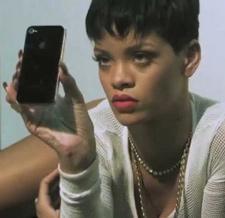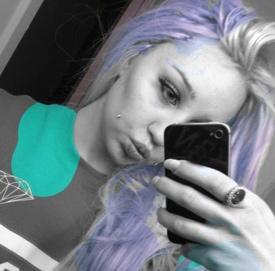 Selfies are pictures you take of yourself tagged with #selfie or just with #me. They are showing up all across social networks like Facebook or Instagram—often but not exclusively posted by women. As the numbers and frequency of selfies increase, the phenomenon has garnered attention. In our globally connected 24/7 world, anything that gets attention, gets talked about. Some view these self-created self-portraits as proof of cultural—or at least generational— narcissism and moral decline. I, on the other hand, view them as a by-product of technology-enabled self-exploration.
Selfies are pictures you take of yourself tagged with #selfie or just with #me. They are showing up all across social networks like Facebook or Instagram—often but not exclusively posted by women. As the numbers and frequency of selfies increase, the phenomenon has garnered attention. In our globally connected 24/7 world, anything that gets attention, gets talked about. Some view these self-created self-portraits as proof of cultural—or at least generational— narcissism and moral decline. I, on the other hand, view them as a by-product of technology-enabled self-exploration.
What’s your opinion about selfies? Vote here.
Western civilization has a rich history of self-portraiture that continues to expand with technological innovations. Where once they were the province of the elite either in status or skill, cell phones and Instagram have democratized self-portraiture, making them less precious and more fun. Voila selfies.

Selfies aren’t new, in spite of the recent surge. Self-portraits tagged as #selfie began to appear on the photo-sharing site Flickr and on MySpace back in 2004 and the first definition of a ‘selfie’ gained entry on UrbanDictionary.com by 2005 (albeit spelled ‘selfy’). But camera phones, especially those with front and back lens action, have made taking selfies faster and easier than ever.
Young women are the biggest population of selfie-posters and you know it’s going mainstream when marketers jump on the bandwagon. The Fashion Conglomerate Westfield launched a contest called “Selfies Style” soliciting selfies that highlight individual style after research indicated that six out of every ten women used their mobile device to take self portraits, most of which end up on Facebook.
Humans have long demonstrated an interest in self-exploration. From early Greeks to present day, people have used self-study and self-observation to explore identity and sense of self. Trying to figure out who we are and what we’re about is a distinctly human pursuit for almost everyone, whether you are trying to find greater consciousness or figure out what moved you to buy the blue shoes.
It’s not a big leap to go from a pursuit of self-exploration to the desire for self-portrait. As far back as Ancient Egypt, people of wealth and power have commissioned self-portraits, although less for self-exploration than glorification. Nevertheless, a number of technological breakthroughs throughout history have continued to lower the barriers to the creation and display of self-portraits.

We take mirror for granted, but their invention in the 15th century let artists paint themselves which some, like Albrecht Durer, did with gusto. The camera in the 1860s launched a new era of selfies, but the technology demanded skill and expense. As the camera evolved, more and increasingly creative versions of self-portraiture appeared. Digital cameras freed portraiture from the cost and time lag of film.
Then mobile phones became cameras, too. By 2012, 86% of the population of the US had a cell phone, lagging behind a host of countries like the UK, Italy, Spain and China. You might not always take your camera with you, but you always have your phone. The floodgates were open on our ability to not only document everything at no marginal cost, but share them as well. (Mobile Internet access allows easy real time posting but people can also post to a Facebook page using text messaging.)
Western civilization has a rich history of self-portraiture that expands with technological access. Cell phones and Instagram have democratized self-portraiture, making them less precious and turning them into selfies.
In spite of the wealth of negative headlines, there are several reasons for selfies that have nothing to do with narcissism.
- Selfies facilate self and identity exploration. One of the most effective ways to know yourself is to see yourself as others see you. Selfies offer the opportunities to show facets of yourself, such as the arty side, the silly side, or the glamorous side. We learn about people by accumulating information over time. Our understanding of everything, include other people, is a synthesis of all the things we know about them. By offering different aspects through images, we are sharing more of ourselves, becoming more authentic and transparent—things that digital connectivity encourages.
- Selfies cab clearly identify a passion or interest that reinforces our social identity, like the selfies of Japanese teens doing the Kamehameha moves from the popular Dragon Ball manga and anime series.

- Selfies can be more about the context than the self, such as an artistic expression of fashion or photographic technique.
- Selfies can be a transitory question, such as seeking feedback from a friend — “Do you like this outfit?”
- Selfies are not all about seeking external validation. People often say that posters of selfies just want approval. We ALL seek approval. Humans are social animals, driven by the need for connection and social validation. We want to be valued, appreciated, and included in the groups that matter to us.
- Selfies have many layers. As viewers, we are aware that every selfie is self-generated. We also take this into account with every selfie — we inherently look for the sub-test about what is being revealed.
- Selfies feel more real than traditional portraits. Selfies are popular with celebrities who cultivate their fans because in their casual rawness, selfies feel more immediate, intimate and personal, enhancing the celebrity’s connection to their fans.

- Selfies can be normalizing. For years, people have been concerned about the amount of images of ‘perfect’ women on the Internet. Between profiles pictures and selfies on photo sharing sites, there are many more photos of ‘real’ people images compared to idealized images by thousands. The “ugly selfie” has also emerged in part a response to criticism about narcissism and in part a self-exploration of motive. The push for authenticity has emerged, sometimes through humor as in Reddit’s “Pretty Girls Ugly Faces” meme, in which users upload photos of themselves with disgusting faces next to the conventional shot. One artist commented that the ugly selfie challenges her own vanity and puts her personality back into the self-documentation.
- Selfies offer users the ability to create a life narrative through images—silly, ugly, pretty, whatever. Images interact differently with the brain than text. Images encode experience. When we look at old photos, our brains revive the event allowing us to relive some of the emotions, context, and experience. We can look back on our motives and actions and gain insight we couldn’t’ get in any other way.
And maybe it’s okay to celebrate yourself along the way. What’s your opinion about selfies? Let me know here.
Selfies from top: Rihanna, Amanda Bynes, Albrecht Durer, Japanese teens performing Kamehameha Attack moves from popular Dragon Ball anime and manga, and Justin Bieber.

